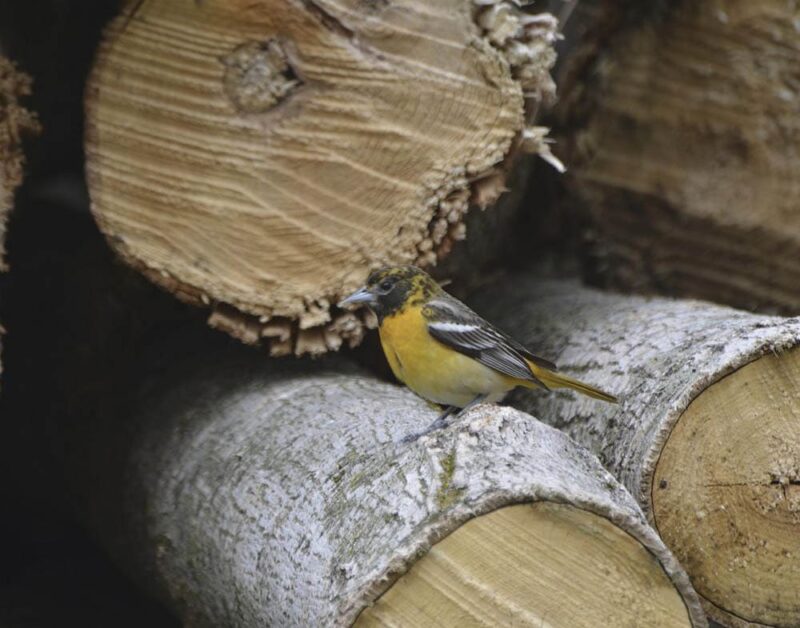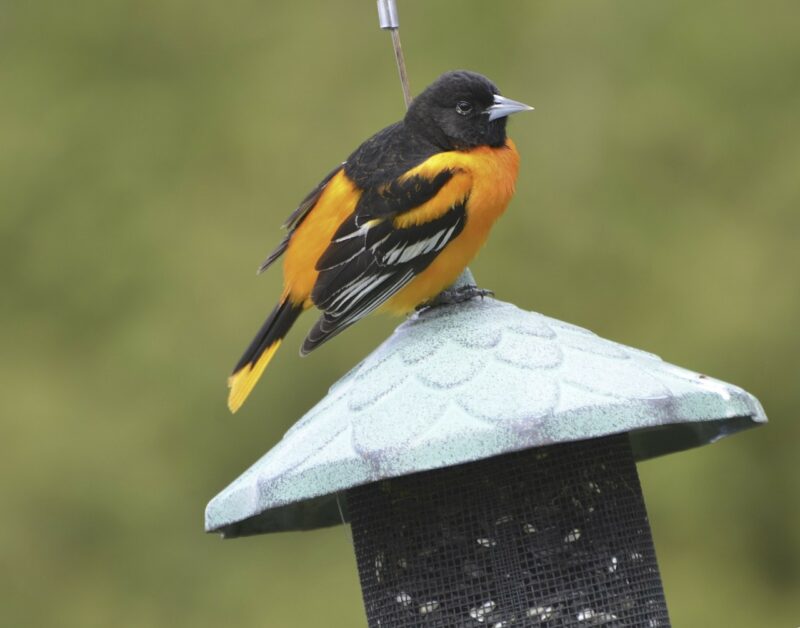What is Maryland’s State Bird? How Was It Decided?
Last Updated on

Maryland can be a birdwatcher’s paradise due to the various natural surroundings, from mountains and forests to farmlands and the coasts. Out of all the birds Maryland could have selected as its official state bird, they bestowed that honor to the Baltimore oriole.
To learn more about the Baltimore oriole and why Maryland chose this to be their state’s bird, read on.

What is a Baltimore Oriole?
The Baltimore oriole (Icterus galbula) is a member of the New World blackbird family, scientifically known as the Icteridae. When the Baltimore oriole reaches adulthood, these birds have a 9- to 12.5-inch wingspan and a body length of 6.5 to 8.5 inches. Adult males have vibrant deep orange plumage on their chest and belly with black-colored feathers covering the rest of their bodies and heads, while adult females and immature males have golden-yellow plumage and grayish feathers on their backs and wings. Both adults have white bars on their wings.

Why is the Baltimore Oriole Maryland’s State Bird?
Maryland has this bird as the state bird because the male’s colors and pattern closely resemble Lord Baltimore’s heraldic flag. Lord Baltimore, also known as Cecil Calvert, became the first Proprietor of the new colony of Maryland in 1632. The Maryland flag has gold and black colors and was used to represent Maryland until the original colonies gained independence from the British in 1776. The flag was reintroduced in the 1850s.
Currently, the flag contains two designs: Lord Baltimore’s heraldic flag of gold and black and the Crossland coat of arms of red and white. The flag became the state’s official flag in 1902, and over 40 years later, in 1947, the Baltimore oriole became the official state bird of Maryland.
The History of the Baltimore Oriole
It is not clear when the Icterus galbula earned the name “Baltimore oriole”, but famous naturalist Mark Catesby said it was quite common for people to call it the “Baltimore bird”. However, this bird was often categorized as a Northern oriole during the 1970s due to very similar coloring and patterns. Two decades later, ornithological societies used genetics to verify that the Baltimore oriole was its own distinct species. The “Baltimore bird” was back on top!
In 1882, the Baltimore oriole was granted protected status under state law, followed by being protected under the Migratory Bird Treaty Act of 1918. It became illegal to hunt, sell, or kill over 800 birds listed under this Act—including the Baltimore oriole. Despite it having state and federal protection, the bird’s population saw a decline in the 1980s due to habitat loss and the use of dangerous pesticides to control the insect population. But with efforts from conversationalists and bird-lovers across the East Coast to the Midwest, the Baltimore oriole numbers are currently stable.

The Baltimore Oriole in Maryland Culture
The Baltimore oriole is probably best known for being the name of Maryland’s major league baseball team. The players’ uniforms are black and deep orange, more closely connected to the bird itself as opposed to the golden colors of the state flag. The mascot of the team is, of course, a Baltimore oriole.
How Common are Baltimore Orioles in Maryland?
These vibrant birds are quite a sight to see, but how often do you get to see them? If you are in Maryland, your best chance to see the state bird is during the spring and summer months, as these birds migrate to Central and South America during the fall and winter months. Although these birds are not considered endangered or at risk, it can be hard to see the Baltimore oriole. They prefer to nest high up in treetops in wooded areas and are not commonly seen on the coast.
If you live in a rural area and want to try and attract these birds to your backyard, Baltimore orioles like fruits, such as apples, blueberries, mulberries, and cherries. You have a better chance to see these colorful creatures if you have these trees around your property.

Conclusion
It is incredible how much history is behind state birds, and Maryland is certainly no exception. The more people know about the Baltimore oriole and other state birds, the more awareness they have of their habitats and what they need for survival. Environmental awareness can help Maryland’s state bird a wonder to see instead of a once in a blue moon experience.
Featured Image Credit: Jay Gao, Shutterstock
About the Author Robert Sparks
Robert’s obsession with all things optical started early in life, when his optician father would bring home prototypes for Robert to play with. Nowadays, Robert is dedicated to helping others find the right optics for their needs. His hobbies include astronomy, astrophysics, and model building. Originally from Newark, NJ, he resides in Santa Fe, New Mexico, where the nighttime skies are filled with glittering stars.
Related Articles:
10 Types of Hummingbirds in Arkansas (With Pictures)
8 Types of Hummingbirds in Nebraska (With Pictures)
5 Types of Hummingbirds in Idaho (With Pictures)
3 Types of Hummingbirds in Mississippi (With Pictures)
8 Types of Hummingbirds in Kansas (With Pictures)
5 Types of Hummingbirds in West Virginia (With Pictures)
5 Types of Hummingbirds in Ohio (With Pictures)
Where Do Nuthatches Nest? Nuthatch Nesting Habits Explained
